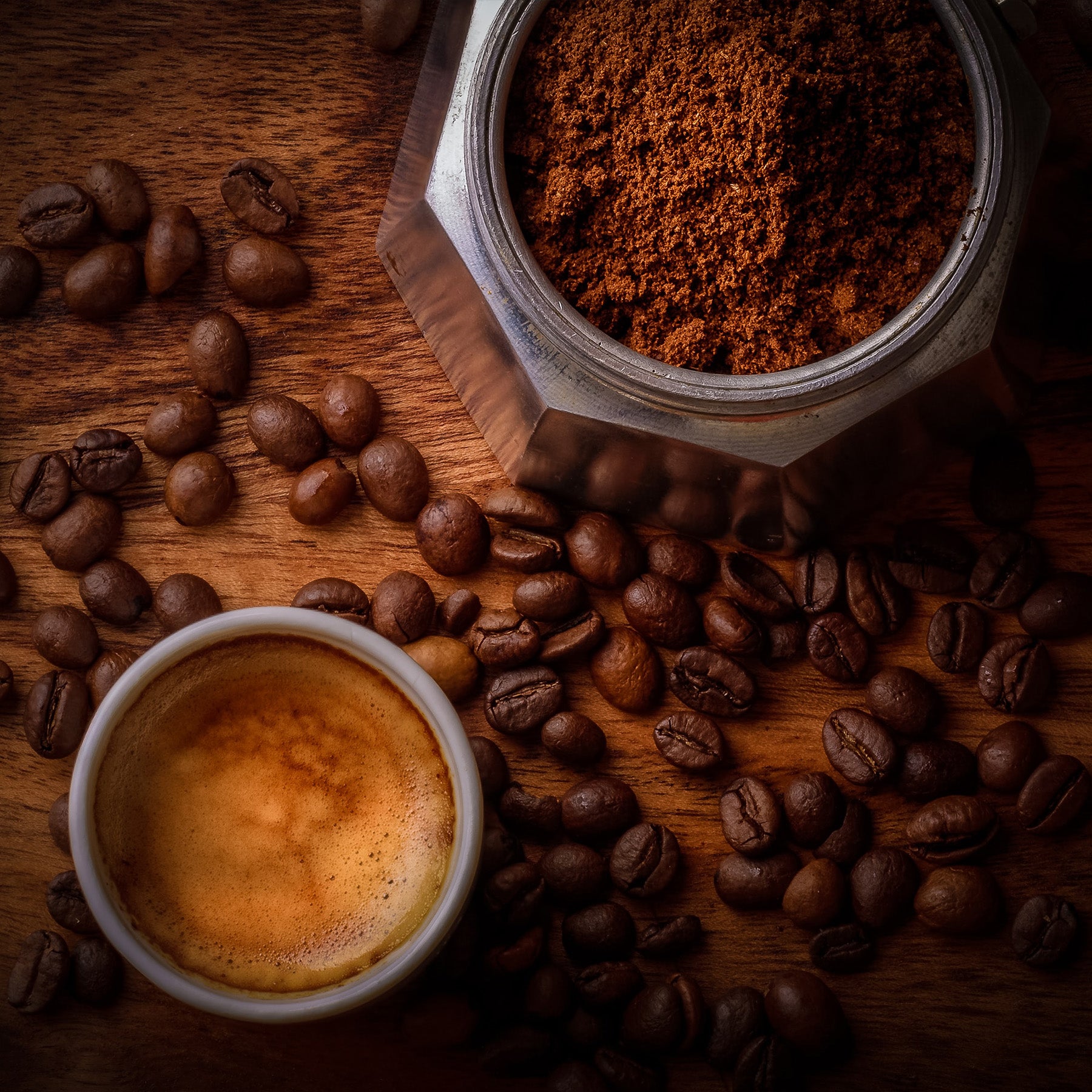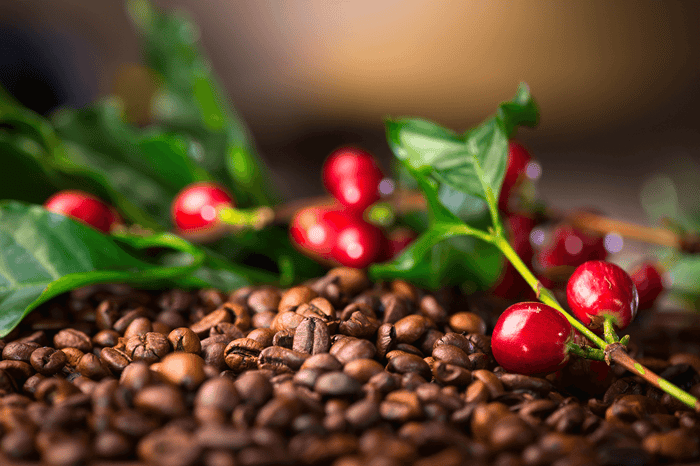Why Coffee Enthusiasts Prefer SOE Single Origin Espresso for Clarity
Why Coffee Enthusiasts Prefer SOE Single Origin Espresso for Clarity
Blog Article
Discovering the Abundant Flavors of Coffee Beans: a Deep Study Espresso and Blended Coffee Beans
You uncover a complicated globe where each range brings its very own personality to your cup when you check out the abundant flavors of coffee beans. Recognizing the origins, processing techniques, and toasting techniques can transform your coffee experience. As you navigate with the art of coffee and the creativity behind mixed coffees, you'll start to value the nuances that make each sip unique. What you'll find next may transform the method you appreciate your early morning mixture.
The Beginnings of Coffee Beans: Discovering Terroir and Taste Profiles
When you take a sip of coffee, you're not just delighting in a beverage; you're experiencing an abundant tapestry of flavors formed by the beans' beginnings. Each area generates one-of-a-kind taste accounts affected by environment, elevation, and soil. Beans from Ethiopia commonly rupture with brilliant, fruity notes, while those from Colombia tend to offer a well balanced, nutty sweetness.As you check out different origins, you'll see just how terroir-- the environmental elements affecting a plant-- plays an essential function. The same coffee variety can taste dramatically various relying on where it's grown.When you think about these factors, you start to value the complexity behind your mug. Each sip narrates of the land and the farmers who supported the beans. So, following time you indulge, assume regarding the trip your coffee took before it reached your hands, and enjoy those intricate tastes that reflect its beginning.
Understanding Espresso: The Art and Scientific Research Behind the Brew
It's not just regarding the strong flavor; it's additionally regarding the techniques that bring it to life when you believe about coffee. Understanding just how different preparation approaches impact preference can change your brewing experience. Let's discover the complexities of coffee prep work and uncover the special taste profiles that make each cup unique.
Coffee Preparation Methods
Coffee preparation is both an art and a science, incorporating accurate methods with a deep understanding of coffee. To begin, you'll wish to choose high-grade, freshly roasted beans and grind them carefully for excellent extraction. The grind dimension is essential; too rugged, and your espresso will be weak, as well fine, and it'll be bitter.Next, tamp the grounds evenly in the portafilter to ensure uniform removal. When you lock it into the maker, go for a developing temperature between 190 ° F and 205 ° F.As you draw the shot, watch for the excellent extraction time-- around 25-30 seconds. The outcome should be a rich, creamy espresso with an attractive layer of crema on top - SOE. With practice, you'll master these techniques
Flavor Profiles Discussed
The world of coffee provides a rich tapestry of flavor profiles that can elevate your coffee experience. When you take that first sip, you'll discover a balance of resentment, sweetness, and acidity. Each espresso bean lugs one-of-a-kind notes, from floral and fruity to nutty and chocolaty. Light roasts typically showcase brilliant level of acidity and vivid flavors, while dark roasts present much deeper, bolder tones.Understanding these profiles aids you select the best coffee for your taste buds. Try out various blends can expose unusual mixes. For circumstances, a well-crafted blend might balance the bright notes of an Ethiopian bean with the abundant, chocolatey undertones of a Brazilian bean. Accept the trip of uncovering espresso's diverse tastes, and you'll transform your coffee routine into an interesting adventure.
Handling Methods: Exactly How They Influence Taste and Aroma
While it could seem that the origin of coffee beans is one of the most significant variable in determining their taste and fragrance, the processing approaches used post-harvest play a just as necessary role. You'll discover that these approaches can substantially alter the last preference profile of your cup.For circumstances, the washed procedure removes the fruit from the beans before fermentation, frequently leading to a cleaner, brighter flavor. The natural procedure leaves the fruit undamaged throughout drying out, resulting in a sweeter, fruitier profile.Other techniques, like honey processing, strike an equilibrium, enabling some fruit mucilage to continue to be, providing an one-of-a-kind complexity.Each handling method connects with the beans' integral attributes, improving or silencing specific flavors and fragrances. So, when you sip that espresso or mixed coffee, bear in mind that the journey from cherry to cup is affected not just by beginning but additionally by just how those beans were processed.

Toasting Techniques: Opening the Full Prospective of Coffee Beans
Roasting strategies are vital for disclosing the complete possibility of coffee beans, as they transform raw, environment-friendly beans into the aromatic, delicious coffee you take pleasure in. The choice of roasting approach-- light, medium, or dark-- dramatically affects taste profiles. Light roasts protect the beans' all-natural level of acidity and fruity notes, while tool roasts balance sweetness and splendor. Dark roasts, on the various other hand, emphasize strong, great smoky flavors.You can experiment with roasting temperatures and times to discover your best mixture. A slower roast at lower temperatures permits complex flavors to establish, while a quicker roast can escalate bitterness. Take note of the splits throughout roasting; the very first split shows a light roast, while the second crack signals a dark roast - SOE. By understanding these techniques, you'll reveal a world of flavor, boosting your coffee experience to brand-new heights. Delight in every sip, understanding the treatment that went right into your mug!
The Magic of Blended Coffee: Developing Unique Flavor Experiences
Creating an one-of-a-kind taste experience with combined coffee can change your early morning ritual right into an expedition of preference. By combining different beans from various areas, you can disclose a harmony of tastes that raise your cup to new heights. Each blend offers a distinct profile, stabilizing body, level of acidity, and sweetness to produce something genuinely special.When you select a blend, you're not just selecting a coffee; you're picking a trip across diverse landscapes and societies. Trying out different combinations allows you to discover your individual favorites, whether you delight in fruity notes or rich, chocolatey undertones.Blended coffee additionally offers you the versatility to change the brew to match your state of mind. You might crave a light-bodied mix eventually and a strong, dark click to read roast the next. Welcome the magic of blending and let each mug shock your palate, making every sip a delightful journey.
Tasting Notes: Recognizing the Subtleties in Your Cup
As you sip your coffee, you could discover a range of tastes dancing on your palate, each disclosing the details of the beans. You may taste the brilliant level of acidity evocative citrus or the deep, rich notes similar to dark delicious chocolate. The sweetness could stimulate honey or caramel, balancing the total account beautifully.Pay focus to the body of the coffee-- does it really feel ventilated and light, or is it complete and creamy? The finish, too, uses clues; a sticking around aftertaste might hint at nuttiness or floral undertones.Don' t neglect to discover the one-of-a-kind qualities of various origins, as each region gives distinct tastes. For circumstances, Ethiopian coffees commonly present fruity notes, while Colombian beans could showcase a more spherical sweetness. By identifying these nuances, you'll strengthen your appreciation for every mug, elevating your coffee experience to new elevations.

Developing Methods: Making The Most Of Flavor Removal for Every Bean
When you check out the different developing approaches, you'll discover that each technique can substantially influence the taste profile of your coffee. From French press to pour-over, each approach removes various substances, boosting or muting specific notes. Using a French press allows oils to remain in the brew, developing a richer preference, while pour-over stresses clearness and brightness.Temperature and grind size also play important roles. A coarser grind functions best for cool mixtures, while a fine work is ideal for coffee. Try out water temperature level-- in between 195 ° F and 205 ° F-- can expose hidden tastes, too.Don' t forget steeping time; a quick removal can cause sour notes, while over-extraction might yield anger. By readjusting these variables, you can optimize flavor extraction and truly boost your coffee experience. Take pleasure in the journey of uncovering what technique best matches your taste!
Often Asked Questions
What Is the Perfect Water Temperature for Brewing Coffee?
The ideal water temperature level for brewing coffee's in between 195 ° F and 205 ° F. If you utilize water that's too warm, you'll over-extract flavors; also chilly, and you won't draw out enough. Go for that sweet place for the finest brew!
Just How Does Grind Size Influence Coffee Flavor?
Grind size substantially affects coffee taste. Better grinds essence extra oils and tastes, resulting in a bolder taste, while coarser grinds return a lighter taste. Adjusting grind dimension aids you achieve your preferred coffee account.
Exist Health Perks Linked With Drinking Coffee?
Yes, drinking coffee can use wellness advantages. It may improve cognitive function, boost metabolic rate, and lower the threat of certain diseases. Simply bear in click here to find out more mind to appreciate it in moderation to enjoy the benefits without damaging results.

What Is the Difference Between Arabica and Robusta Beans?
Arabica beans are smoother and sweeter, often including fruity flavors, while robusta beans are more powerful with a bitter preference and higher caffeine web content. You'll observe these differences in aroma and developing experience.
Exactly How Can I Store Coffee Beans for Quality?
To keep coffee beans for freshness, maintain them in a closed container, away from warmth, wetness, and light. If you just grind what you need right prior to brewing, you'll keep their flavor much longer. When you check out the abundant flavors of coffee beans, you reveal a complicated world where each range brings its own personality to your cup. When you take a sip of coffee, you're not simply delighting in a beverage; you're experiencing a rich tapestry of flavors formed by the beans' origins. While it could seem that the origin of coffee beans is the most substantial aspect in identifying their taste and fragrance, the handling techniques used post-harvest play a just as essential function. Toasting techniques are vital for exposing the full capacity of coffee beans, as they change raw, green beans right why not try here into the aromatic, tasty coffee you appreciate. As you drink your coffee, you could notice a range of flavors dancing on your taste, each exposing the details of the beans.
Report this page